List Of Online Resources
List of Online Resources
Over the past week I’ve been compiling a short list of online resources I often use when I’m doing anything space-related online, whether it be writing summaries of news updates or trying to understand some complicated science topic. Hope these are useful!
On getting up-to-date news:
ScienceDaily
Space.com
Science Mag
On understanding scientific topics:
Crash Course
Khan Academy
Space Exploratorium
Of course, there are many resources out there, but these are the ones I use most often.
More Posts from Catchconstellations-blog and Others
First Discovery of Atmosphere on Known Exoplanet
While news of Trappist-1′s potentially inhospitable environment made its way through the news feeds, a new discovery emerged to make up for it: an existing atmosphere on exoplanet GJ1132b.
Located 39 light years away (just around the corner in galactic terms), the exoplanet is similar to Earth in size and mass, and is in close-orbit to its star: a dim red dwarf just slightly cooler and smaller than our own Sun. It was discovered in 2015, but it’s only now that scientists have been able to take a closer look at its composition.
While the distance between GJ and its host star is more similar to the one between Venus and our Sun, therefore most likely rendering the exoplanet incapable of hosting life due to extreme surface temperatures of up to 370 degrees Celsius/700 degrees Fahrenheit, the most important aspect to focus on is the discovery is the atmosphere that exists on GJ.
Using advanced technology that picks out biochemical signatures such as those of oxygen, methane, and hydrogen, scientists have identified a thick atmosphere of either steam or methane surrounding GJ. While this is not a certain indicator of life, it is an crucial step in increasing our knowledge of potentially habitable alien planets out there.
It is definitely interesting to see that scientists have found the first alien atmosphere that isn’t Earth’s. It seems that many of the Earth-like planets scientists have discovered are inclined to orbit red dwarf stars like Earth and that of GJ1132b. I wonder if we specifically target finding red dwarves, will wel increase our chances of finding more and more Earth-like exoplanets that could be capable of having life? It’s something to think about as we continue moving into the future.

The beautiful Milky Way taken in one of the most darkest skies in the world over Boa Vista in the Cape Verde Islands. photo by James Atkinson
js
Meet Our 7 Newest Planetary Neighbors
On Wednesday, February 22, NASA took the whole world by storm when they announced the incredible discovery of 7 Earth-sized exoplanets – all of which could potentially have the right conditions for life to exist!
While there has been a relatively continuous stream of newly found exoplanets in the past years, this exoplanet system, named TRAPPIST-1 for the Chile-based telescope that first discovered the planets back in May, is particularly special because of three main reasons:
1.) They are considered relatively close (40 light years/235 trillion miles) to Earth.
2.) They are the first known system of Earth-sized planets that orbit a single parent star, with 3 planets located in the “Goldilocks zone”, the astrophysical orbit that has just the right conditions for allowing liquid water, and by extension, life, to exist. While all 7 could have liquid water, these 3 have the highest chances.
3.) Their parent star, an ultra-cool dwarf, has temperatures so low that liquid water can exist on the planets closest to it; what’s more, the planets are so incredibly close to their parent star – all 7 are closer to their parent star than Mercury is to our own Sun – that someone standing on the surface of each planet could potentially see the physical features of the other planets.
The implications of this find is mind-blowing: at the moment, Earth is the only planet we know that exists with liquid water in our solar system’s Goldilocks zone. We have no other suitable planet we can use for comparison, which is why the search for life in outer space can seem futile. But this discovery of 7 whole Earth-sized planets with the right conditions for water and life to flourish sparks the age-old question into overdrive – are we alone in the universe or not?
Earth is no longer the potentially only life-sustaining planet; we have 7 exoplanets, 3 in the Goldilocks zone, that can harbor water and life. That just blows my mind, and while I have often lamented in the past that I was born too late for traveling the world and too early for exploring space, I am grateful to be alive in this time of immense space-science discovery.
But what next? We’ve discovered this new system, what are we going to do about it? According to NASA, a new telescope called the James Webb Space Telescope will be launched in 2018. Equipped with state-of-the-art technological capabilities such as increased sensitivity sensors, it will be able to detect chemical signals present in a planet’s atmosphere such as methane, oxygen, and water. And hopefully, it will tell us more about our 7 new neighbors – and what could be on them.
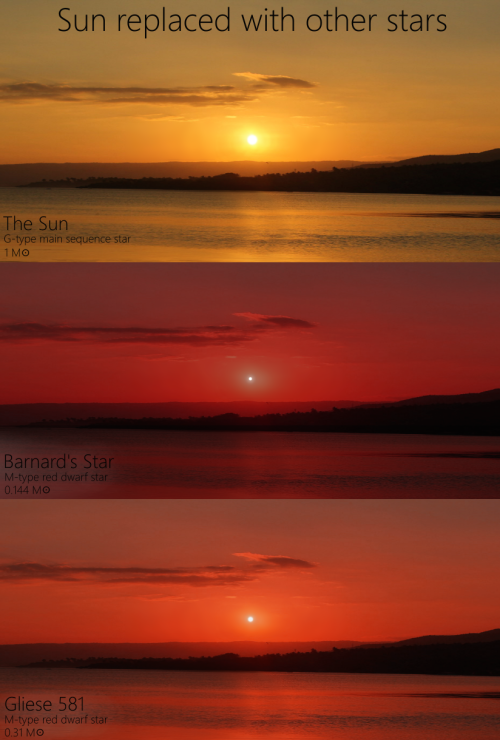
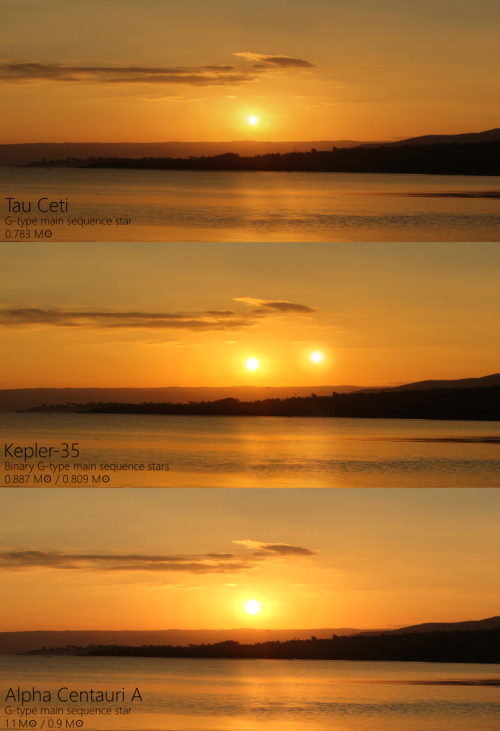
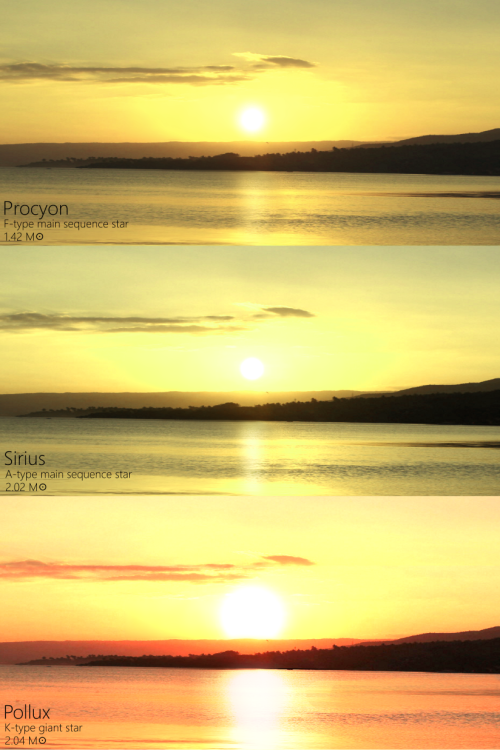
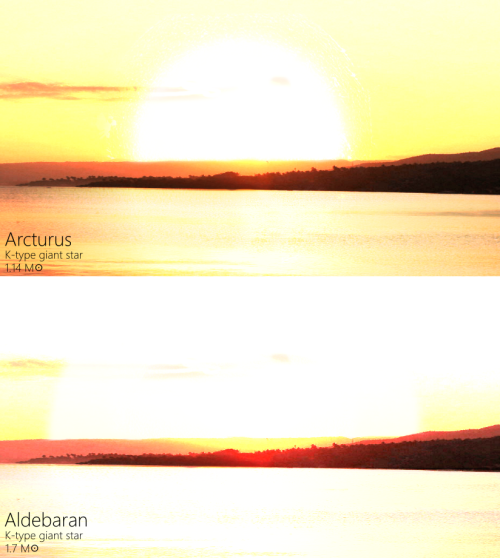
The Sun replaced with other Stars
This visualization shows how the sunset could look like to a human observer if our Sun was replaced by some of the other stars in our galaxy with different sizes and magnitudes, namely Barnard’s Star, Gliese 581, Tau Ceti, Kepler-23, Alpha Centauri A, Procyon, Sirius, Pollux, Arcturus and Aldebaran.
It is just a concept, as liquid water and the Earth as we know it could not exist in the vicinity of the most stars in this graphic. Visualizations are based on the absolute brightness, spectral class and the radius of each star.
by Martin Vargic
Catch Constellations
Hello everyone! My name is Dianne and this is my blog on everything space related! While I am currently writing more about news updates and what’s currently going on in the space world than anything else, I hope to branch out - catch other constellations, so to speak - and contribute more content such as quotes, commentaries, videos, explanations of scientific concepts, and more.
I created this blog not only because I wanted to share my love for space with anyone who happens to find this little corner of the internet, but also because I wanted to do it in a way that isn’t too techno-jargon-filled or confusing. As a STEM major, I know how confusing trying to understand complicated scientific concepts can be, and that’s why I’ll do my best to make sure everyone and anyone can enjoy my posts!

A little bit about me:
- I’m currently a sophomore at the University of Central Florida, studying biotechnology and planning to enter the astrobiology/sustainable energy fields one day.
- I love space, which may seem obvious given this blog, but it is sincerely one of my life goals to become an astronaut and go beyond Earth. It has been ever since I was a little girl. There is so much out there that we don’t know, that we can explore, that we can learn from!
- When I’m not studying or planning to take over NASA, you can find me writing and journaling, buried in a book, singing my lungs out to Disney songs or Broadway soundtracks, or generally doing a bunch of nerdy stuff.
- Rapid fire personality points! INFJ + Hufflepuff + Virgo
Alright! This will be it for my first blog post. I’ll be back soon with updates on some really cool space news. Until then, ad astra!


A Personal Update
Hello everyone! This is just a quick behind-the-blog update from me.
I’ve been applying to NASA internships for the past three months, and I’m sad to say that I was not chosen for any of them.
I must admit it broke my heart a little bit to see the positions I applied for fill up with no offer extended to me. I really thought I had a good shot at a few of them this time around. I really thought I had a chance.
I’m writing this because I want everyone to know that is natural to feel frustrated and disappointed, and that whatever setback you may encounter is not the end of the world. Just as there are countless stars in the night sky, there are just as many opportunities still waiting for you to find them.
Yes, my heart is heavy from this, but I know I’ll bounce right back. Rejection is a part of life, after all, and no one ever made it to the stars after giving up because of a few rejections.
I’m going to keep moving forward, with my eyes on the stars, doing what I love to do, and I know I’ll get where I want to be someday.
Until then, ad astra!

United Arab Emirates’ Plan for a Mars City
It seems that everyone is really starting to get into the race to Mars! The project, dubbed “Mars 2117”, envisions a completely functioning human community on the surface of the red plane by year 2117.
According to the Emirates Mars Mission main website, Mars 2117 is a specific goal that the UAE hopes will encourage international cooperation in space exploration and scientific discovery. This ambitious project also falls under a larger umbrella of aerospace goals that the UAE has set out since 2014 when they first showed interest in entering the space industry. Some of these goals include sending an unmanned probe to Mars by 2021, studying Earth’s atmosphere using advanced technology, and collaborating with scientists worldwide.
The Mars 2117 project is an incredible vision, one that I am excited to see grow and gain more attention in the years to come. While there are many initiatives around the world that aim at reaching the famous red planet, this is the first time that an entire nation has so publicly announced support and planning for such an enormous long-term project, and looks to be moving with forward momentum.
I can only wonder what other nations and organizations are thinking about this concept, as well as marvel at how much attention the space industry has garnered recently. It seems as if there are new technical discoveries and achievements being made everyday, and it doesn’t look like the space race is stopping. With SpaceX and NASA already testing advanced aero-spacecraft for future launches, and the Dutch Mars One Mission currently under progress, Mars 2117 certainly adds more fuel to the fire.
A century is certainly a long time and anything can happen between 2017 and 2117, but I can’t wait to see what happens until then.
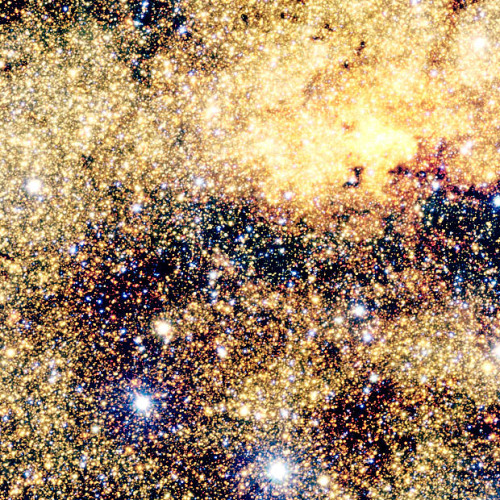
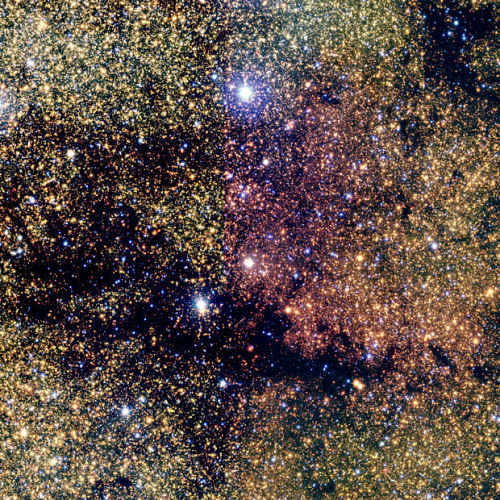
Milky Way Shows 84 Million Stars in 9 Billion Pixels
Side Note: The two images shown above are mere crop outs from ESA’s recent hit: The 9 Billion Pixel Image of 84 Million Stars. These two focus on the bright center of the image for the purpose of highlighting what a peak at 84,000,000 stars looks like.
Astronomers at the European Southern Observatory’s Paranal Observatory in Chile have released a breathtaking new photograph showing the central area of our Milky Way galaxy. The photograph shows a whopping 84 million stars in an image measuring 108500×81500, which contains nearly 9 billion pixels.
It’s actually a composite of thousands of individual photographs shot with the observatory’s VISTA survey telescope, the same camera that captured the amazing 55-hour exposure. Three different infrared filters were used to capture the different details present in the final image.
The VISTA’s camera is sensitive to infrared light, which allows its vision to pierce through much of the space dust that blocks the view of ordinary optical telescope/camera systems.
source
Beautiful photo! This reminds me of the time my family and I went to Yellowstone National Park around four years ago. We arrived at the park around midnight and were treated to the clearest star-filled night sky we had ever seen. It was stunning - the stars stretched from one horizon to the next, and there was no end to them. It made me feel very small in the grand scope of the universe, and just how much we miss out when we become accustomed to city lights and the urban sprawl. Makes me want to go camping in some remote place again.

The Milky Way from Acadia National Parks Thunder Hole
js
CONSTELLATION: (noun) Group of stars that form a recognizable pattern to which a mythological or earth-based name is assigned Pattern of stars whose name or is associated with different stories and meanings Story told by stars connected across the infinite night sky, overlapping with countless other stories that have unfolded from ancient supernovas, whose imaginary lines urge our eyes up from the chaos of the world around us to the unknown vastness in which we are but a speck of dust -------- Hi! I’m a starry-eyed astrogeek named Dianne who loves absolutely everything that has to do with the stars and outer space. When I’m not studying or preparing to take over NASA one day, you can find me trying to stargaze despite city lights or happily planning my next road trip.
35 posts